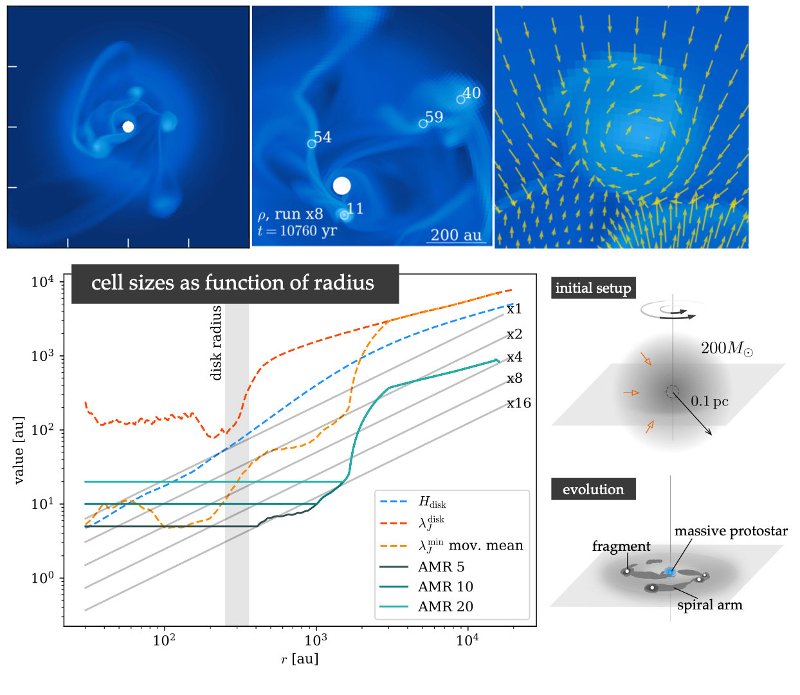| EPoS Contribution |
|
Modeling disk fragmentation in massive star formation
Andre Oliva-Mercado U Tuebingen, Tuebingen, DE | |
| We performed the highest resolution radiation-hydrodynamical simulations on disk fragmentation around forming massive stars to date, starting with the collapse of a 200 Msun molecular cloud, and focusing on the first ~20 000 yr of evolution, where a fragmenting accretion disk is formed. These simulations were performed on a spherical grid and logarithmically increasing radial coordinate with the code Pluto, with the addition of custom modules for radiation transport and self-gravity. For the first time, the physics of the fragmentation process are resolved without the need for a sink particle subgrid model for the fragments. We followed the mass, temperature and orbit of the fragments, and studied the possibility of their further development as low-mass companions, as well as the interactions between the fragments, the disk and spiral arms. From this analysis, ≤ 10 companions were formed, at different distances from the primary: from spectroscopic binaries, to companions at distances between 1000 and 2000 au. Additionally, the effects of resolution on the reported results were studied by performing the same simulation in five different resolutions, each one of them with a factor of two lower resolution than the predecessor run. We show that previous AMR simulations in the literature exhibit numerical fragmentation since they do not adequately resolve the Jeans length. | |
 | |
| Caption: In the top row, some snapshots of the density in the midplane for our simulations. The plot shows the cell size as a function of radius, in the midplane. Our simulations are shown there as x16, x8, x4, x2 and x1, λJ is the Jeans length in the fragmentation-prone areas in the disk, and cell sizes for AMR grids are also shown (with the Jeans length refinement criterion), the number after AMR shows the minimum cell size. An illustration of the simulation setup and evolution is also shown in the right column. | |
| Collaborators: R. Kuiper, U Tuebingen, DE |
Key publication
Suggested Session: High-Mass Star Formation |

